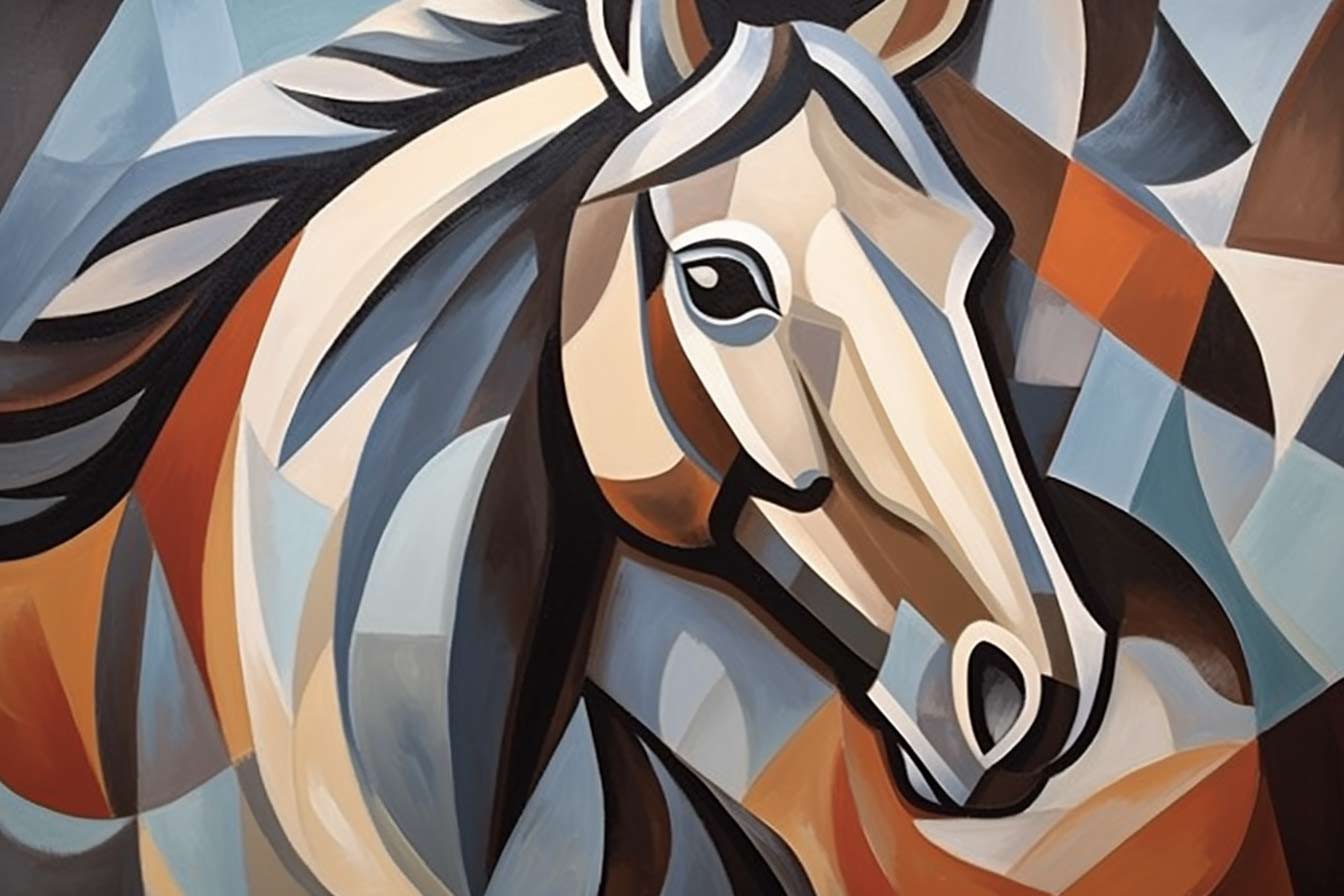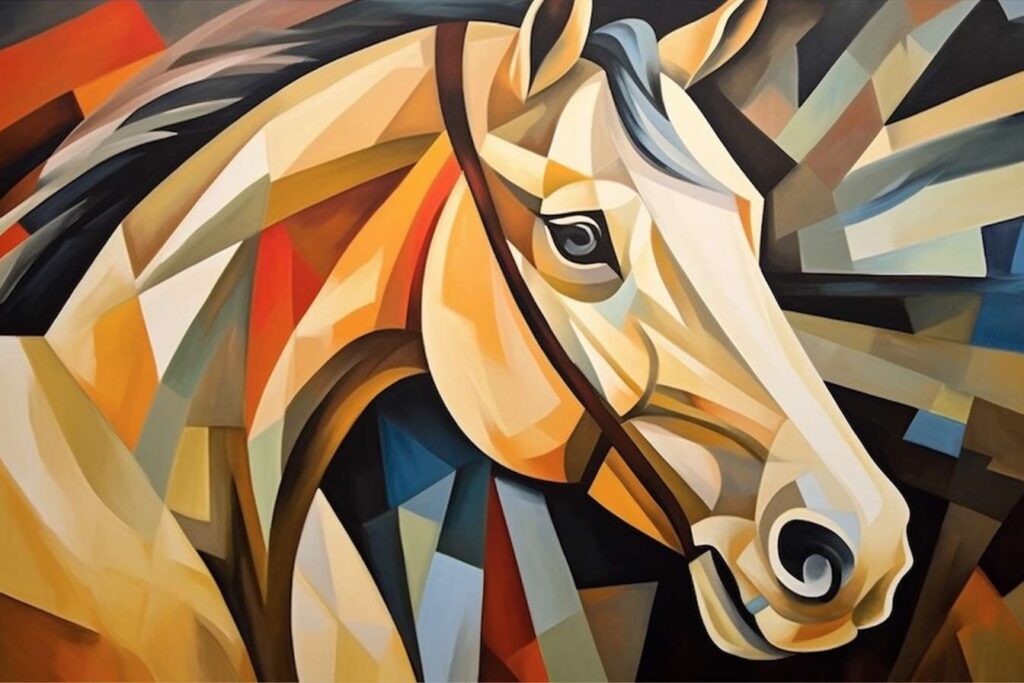The Architecture of Visual Thought
In the far reaches of human imagination, where the mind converges with the tactile realities of pigment and canvas, Cubism arises as a beacon of uncharted perception. Pioneered by the gifted Georges Braque, Cubism allows us to journey into the unexplored territories of form and space. Thus, we shall undertake the endeavor of rendering a noble creature—a horse—into a Cubist spectacle, ever influenced by the techniques and vision of Braque himself.
Analytical Cubism: The Aesthetic Autopsy
The first phase of our Cubist escapade is grounded in the analytical rigor of dismantling form into its primal geometric constituents. Analytical Cubism does not merely depict; it dissects, offering a nuanced narrative of planes and dimensions.
Step One: The Preliminary Gaze and Sketch
Begin by examining the equine form before you. Let not your hand mimic the visible contours but sketch with an eye for the elemental—cubes, spheres, and triangles should serve as your alphabet. This initial blueprint shall guide the hand and the mind through the ensuing journey.
Step Two: The Art of Fragmentation
Having sketched the horse in broad strokes of simple shapes, proceed to break it down further. Imagine the horse as a constellation of geometric stars, each contributing to its celestial grandeur. A hoof can become a series of angled planes; the mane, a cascade of fragmented lines.
Step Three: The Tapestry of Perspectives
The magic of Analytical Cubism resides in its capacity to show multiple vantage points in a singular frame. Thus, reveal the horse’s form from assorted perspectives, turning what would be flat into a dance of dimensions. Let the animal’s muscular flank be visible alongside its robust head, all in the same confined yet boundless pictorial space.
Synthetic Cubism: The Loom of Reconstruction
Having dissected, we shall now reconstruct through the lens of Synthetic Cubism. Here, the artist becomes a divine creator, fashioning a coherent narrative from a chorus of disparate elements and textures.
Step One: The Palette of Emotion
For the background, opt for large swaths of color that evoke emotion or resonance with the equine subject. The background serves as an emotional canvas upon which the shards of horse shall emerge.
Step Two: Media of Multiplicity
Synthetic Cubism delights in the material as much as the form. Collage is its natural ally. Affix cuttings of newspapers, pieces of fabric, or even shards of wood to your canvas. Each fragment becomes a verse in a grand poetic composition, one that speaks both of horse and of life.
Step Three: The Culmination of Forms
It is time to coalesce the disassembled shapes and textures into a semblance of equine majesty. Although each piece is akin to an individual note, when orchestrated correctly, they sing in unison to portray not just a horse but a vision of what a horse can be in the landscape of shattered and reconstructed realities.
The Symphonic Stillness of Form
By adhering to the tenets of both Analytical and Synthetic Cubism, the artist metamorphoses a subject as timeless as a horse into a narrative that is simultaneously ancient and pioneering. Your canvas will not merely showcase a horse but also how the eye can traverse multiple dimensions, challenging not just the boundaries of art but of perception and thought. And so, from geometric simplicity to complex unity, your Cubist horse shall stand as a testament to the limitless possibilities of the human imagination.

All the works of art you see on this site have been created using artificial intelligence algorithms, capturing the essence and techniques of the great masters of Cubism.
